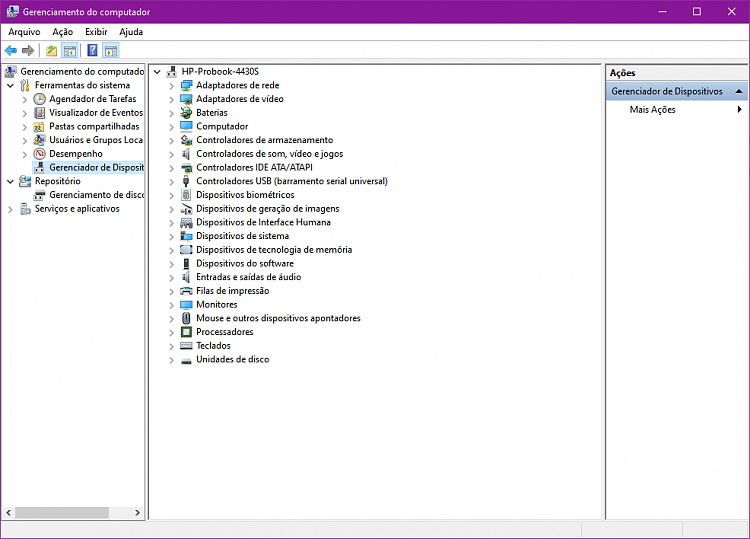Before you begin
Driver updates for Windows 10, along with many devices, such as network adapters, monitors, printers, and video cards, are automatically downloaded and installed through Windows Update. You probably already have the most recent drivers, but if you'd like to manually update or reinstall a driver, here's how:
Update the device driver
The package provides the installation files for Microsoft MTP Device Driver version 3.0.1504.0. If the driver is already installed on your system, updating (overwrite-installing) may fix various issues, add new functions, or just upgrade to the available version.
In the search box on the taskbar, enter device manager, then select Device Manager.
Select a category to see names of devices, then right-click (or press and hold) the one you’d like to update.
Select Search automatically for updated driver software.
Select Update Driver.
If Windows doesn't find a new driver, you can try looking for one on the device manufacturer's website and follow their instructions.
Reinstall the device driver
- Get help, training, and support for your PC accessories.
- To install the latest firmware, drivers, or software available for your Microsoft LifeChat headset, select the link next to your product. This will take you to the appropriate Microsoft Downloads site. Note that if you're running Windows 8.1 or later, no updated software is required.
- Windows Compatible Products List. Welcome to the Windows Compatible Products List! Windows Hardware Compatibility means that a manufacturer has rigorously tested their hardware and met all of Microsoft's compatibility requirements.
In the search box on the taskbar, enter device manager, then select Device Manager.
Right-click (or press and hold) the name of the device, and select Uninstall.
Restart your PC.
Windows will attempt to reinstall the driver.
Usb ports driver download. Update the device driver In the search box on the taskbar, enter device manager, then select Device Manager. Select a category to see names of devices, then right-click (or press and hold) the one you’d like to update. Select Search automatically for updated driver software. If the device-specific driver is distributed through Windows Update, you can manually update the driver by using Device Manager. For more information about how to do this, see update drivers in Windows 10. If the device is not yet connected, first install the device-specific driver, such as by using the appropriate installer. Virtual COM port (VCP) drivers cause the USB device to appear as an additional COM port available to the PC. Application software can access the USB device in the same way as it would access a standard COM port. This software is provided by Future Technology Devices International Limited “as is” and any express or implied warranties. Drivers & Downloads. Inspiron, Latitude, or other Dell product, driver updates keep your device running at top performance. Step 1: Identify your product above. Step 2: Run the detect drivers scan to see available updates. Step 3: Choose which driver updates to install. Drivers and Downloads FAQs.
More help
If you can't see the desktop and instead see a blue, black, or blank screen, see Troubleshoot blue screen errors or Troubleshoot black or blank screen errors.
-->[Applies to KMDF and UMDF]
A driver's EvtDevicePrepareHardware event callback function performs any operations that are needed to make a device accessible to the driver.
Syntax
Parameters
Device


[in]A handle to a framework device object.
ResourcesRaw
[in]A handle to a framework resource-list object that identifies the raw hardware resources that the Plug and Play manager has assigned to the device.
ResourcesTranslated
[in]A handle to a framework resource-list object that identifies the translated hardware resources that the Plug and Play manager has assigned to the device.
Return value
If the EvtDevicePrepareHardware callback function encounters no errors, it must return STATUS_SUCCESS or another status value for which NT_SUCCESS(status) equals TRUE. Otherwise, it must return a status value for which NT_SUCCESS(status) equals FALSE. Do not return STATUS_NOT_SUPPORTED.
If NT_SUCCESS(status) equals FALSE, the framework calls the driver's EvtDeviceReleaseHardware callback function.
For more information about this callback function's return values, see Reporting Device Failures.
Remarks


To register an EvtDevicePrepareHardware callback function, a driver must call WdfDeviceInitSetPnpPowerEventCallbacks.
If the driver has registered an EvtDevicePrepareHardware callback function for a device, the framework calls the function after the Plug and Play manager has assigned hardware resources to the device and after the device has entered its uninitialized D0 state. (The Plug and Play manager always starts a parent device before it starts that device's child devices.)
The framework calls the driver's EvtDevicePrepareHardware callback function before calling the driver's EvtDeviceD0Entry callback function.
The EvtDevicePrepareHardware callback function accesses the device's raw and translated hardware resources by using the ResourcesRaw and ResourcesTranslated handles that it receives. The callback function can call WdfCmResourceListGetCount and WdfCmResourceListGetDescriptor to traverse the resource lists. This callback function cannot modify the resource lists.
For more information about resource lists and the order in which the resources appear, see raw and translated hardware resources.
Typically, your driver's EvtDevicePrepareHardware callback function does the following, if necessary:
- Maps physical memory addresses to virtual addresses so the driver can access memory that is assigned to the device
- Determines the device's revision number
- Configures USB devices
- Obtains driver-defined interfaces from other drivers
Typically, all other hardware initialization operations, including loading firmware, should take place each time that the device enters its working (D0) state and should therefore take place in the driver's EvtDeviceD0Entry callback function.
The ResourcesRaw and ResourcesTranslated handles that the EvtDevicePrepareHardware callback function receives remain valid until the driver's EvtDeviceReleaseHardware callback function returns.
For more information about hardware resources, see Hardware Resources for Framework-Based Drivers.
Drivers Grupo De Hardware De Microsoft Office 2010
For more information about when the framework calls this callback function, see PnP and Power Management Scenarios.
For more information about drivers that provide this callback function, see Supporting PnP and Power Management in Function Drivers.
Requirements
Drivers Grupo De Hardware De Microsoft Office 2016
| Target Platform | Universal |
| Minimum KMDF version | 1.0 |
| Minimum UMDF version | 2.0 |
| Header | wdfdevice.h (include Wdf.h) |
| IRQL | PASSIVE_LEVEL |
Drivers Grupo De Hardware De Microsoft 360
See also

